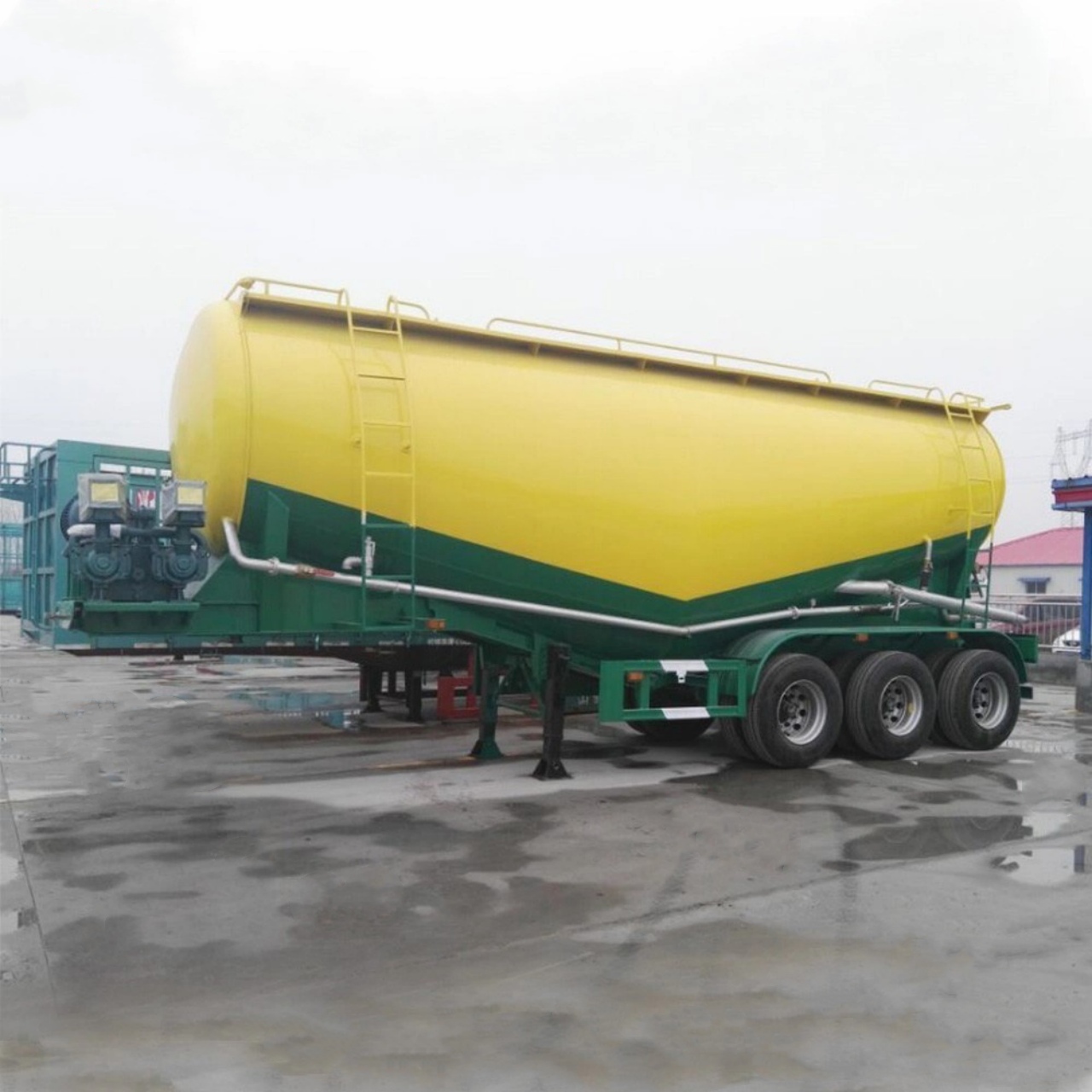In the world of freight transportation, efficiency, safety, and specialization are crucial factors that define the success of a logistics operation. One of the most specialized vehicles used in the transportation of dry bulk materials is the pneumatic trailer. Designed for the transportation of fine, dry, flowable materials, pneumatic trailers play a vital role in industries such as construction, food processing, manufacturing, and agriculture. But what exactly is hauled in a pneumatic trailer? This article explores the types of products transported, how the trailers work, and why they are indispensable for specific sectors.
Understanding Pneumatic Trailers
A pneumatic trailer—also known as a dry bulk trailer—is a sealed tank trailer that uses compressed air to unload cargo through a series of pipes and valves. Unlike other types of tank trailers, pneumatic trailers are built to move dry, powdery, or granular materials that would be difficult or messy to load and unload using traditional methods.
The typical pneumatic trailer has multiple compartments, allowing for the transportation of different products within a single trip. The tank is pressurized using an onboard or external air compressor, and the product is “blown” out through the bottom outlets into a storage silo, hopper, or bin at the destination.
Common Materials Hauled in Pneumatic Trailers
Pneumatic trailers are versatile and used to haul a wide array of dry bulk goods. Below are the most commonly hauled materials categorized by industry:
1. Construction Materials
a. Cement Powder
One of the most common materials hauled in pneumatic trailers is cement powder. Construction companies depend heavily on these trailers to deliver large volumes of dry cement to job sites, batch plants, or ready-mix facilities. The sealed design of the trailer protects the cement from moisture, which is critical because even slight exposure can render it useless.
b. Fly Ash
Fly ash, a byproduct of coal combustion in power plants, is another material frequently transported. It is often used as a cement substitute in concrete production. Its powdery nature makes pneumatic trailers the safest and most efficient way to move it.
c. Lime
Dry lime is used in soil stabilization, water treatment, and construction. Like cement, it must remain dry during transport, making pneumatic trailers ideal for the job.
2. Food-Grade Materials
Pneumatic trailers can also be food-grade, meaning they are made from stainless steel or have a food-safe lining to meet regulatory standards.
a. Flour
Flour mills use pneumatic trailers to ship flour to bakeries, food manufacturers, and wholesalers. Flour is extremely fine and prone to contamination, so airtight, clean trailers are essential.
b. Sugar
Granulated and powdered sugars are commonly hauled in food-grade pneumatic trailers. The cleanliness of the trailer helps maintain product purity and prevents clumping due to moisture.
c. Starch, Cocoa, and Other Powders
Starches, powdered milk, cocoa powder, and similar food ingredients also travel via pneumatic trailers. These are sensitive to contamination and require specialized handling.
3. Plastic Industry Raw Materials
a. Plastic Pellets (Resin Beads)
The plastics manufacturing industry heavily relies on pneumatic trailers to transport plastic resin beads or pellets. These materials are light, uniform, and flow easily through the piping system in the trailer, making unloading quick and efficient.
b. Granulated Plastic
Some trailers are used to haul granulated plastic, either pre-consumer (before manufacturing) or post-consumer (after recycling), to processing facilities or factories.
4. Agricultural Products
a. Grain and Feed
Pneumatic trailers are also used to move livestock feed, soybean meal, corn gluten, and other agricultural byproducts. Their sealed design ensures that the product remains clean and dry during transit.
b. Seed and Fertilizer
Specialized versions of pneumatic trailers can be used to transport seeds and dry fertilizers, particularly when high volumes are involved. The pressurized system helps prevent product degradation.
5. Industrial Powders and Minerals
a. Calcium Carbonate
This fine mineral is used in a variety of products, including paper, plastics, and paints. Due to its powdery texture, it requires pneumatic trailers for contamination-free transport.
b. Silica Sand
Used in manufacturing glass, molds, and fracking operations, silica sand is heavy and abrasive, so rugged pneumatic trailers with reinforced tanks are typically used.
c. Soda Ash, Talc, Bentonite, and Alumina
Other industrial powders transported via pneumatic trailers include soda ash (used in glass making and detergents), talc (used in cosmetics and paper), bentonite (used in drilling and binding), and alumina (used in aluminum production).
Benefits of Using Pneumatic Trailers
1. Clean and Contamination-Free Transport
Because the trailers are sealed, they prevent contamination from dust, moisture, and other external elements. This is critical for industries such as food and plastics, where product purity is non-negotiable.
2. Efficient Unloading
The air pressure system allows for fast unloading without requiring tilting or additional equipment, reducing labor and turnaround time at the delivery site.
3. Versatility
Pneumatic trailers can handle a wide variety of materials, which makes them a go-to solution for many types of dry bulk transport.
4. Reduced Waste
By using sealed systems and controlled unloading, product loss is minimized, which can be particularly important when transporting expensive raw materials.
Conclusion
Pneumatic trailers are a critical link in the supply chain for many industries that rely on the clean, efficient, and bulk movement of dry materials. From cement and plastic pellets to flour and feed, these trailers handle it all. Their ability to transport a diverse range of products safely and efficiently makes them an indispensable tool for modern logistics.
As technology and regulatory demands evolve, pneumatic trailer designs will likely continue to improve, with better sealing, more efficient air systems, and specialized linings for even more sensitive materials. But their essential purpose will remain the same: moving the world’s dry bulk materials from point A to point B—cleanly, safely, and efficiently.




